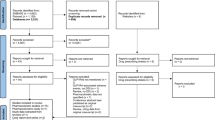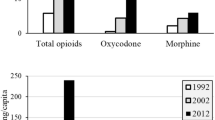Abstract
Purpose. The purpose of this study was to assess if the definition of high solubility as proposed in the FDA Guidance on Biopharmaceutical Classification System (BCS) is too strict for highly permeable acidic drugs.
Methods. The solubility and permeability values of 20 (18 acidic and 2 non-acidic) nonsteroidal anti-inflammatory drugs (NSAID) were determined. The NSAIDs were grouped into three different sets having acetic acid, propionic acid, or other acidic moieties such as fenamate, oxicam, and salicylate. Two nonacidic NSAIDs (celecoxib and rofecoxib) were also included for comparison purposes. Equilibrium solubility values were determined at pH 1.2, 5.0, 7.4, and in bio-relevant media simulating fed intestinal fluid at pH 5.0. For a select number of acids, we also measured solubility values in media simulating gastric and fasted intestinal fluids. Permeability classification was established relative to that of reference drugs in the Caco-2 cell permeability model. Permeability coefficients for all drugs were measured at concentrations corresponding to the lowest and highest marketed dose strengths dissolved in 250 ml volume, and their potential interaction with cellular efflux pumps was investigated.
Results. All NSAIDs with different acidic functional groups were classified as highly permeable based on their Caco-2 cell permeability. Only ketorolac appeared to have a potential for interaction with cellular efflux pumps. Solubility classification was based on comparison of equilibrium solubility at pH 1.2, 5.0, and 7.4 relative to marketed dose strengths in 250 ml. The pK a values for the acidic NSAIDs studied were between 3.5 and 5.1, and, as expected, their solubility increased dramatically at pH 7.4 compared to pH 1.2. Only three NSAIDs, ketorolac, ketoprofen, and acetyl salicylic acid, meet the current criteria for high solubility over the entire pH range. However, with the exception of ibuprofen, oxaprozin, and mefenamic acid, the remaining compounds can be classified as Class I drugs (high solubility-high permeability) relative to solubility at pH 7.4. The use of bio-relevant media simulating gastric and intestinal milieu for solubility measurements or increasing the dose volume to 500 ml did not provide for a better boundary for solubility classification.
Conclusions. Based on the current definition of solubility, 15 of the 18 acidic NSAIDs in this study will be classified as Class II compounds as the solubility criteria applies to the entire pH range of 1.2 to 7.4, although the low solubility criteria does not hold true over the entire pH range. Whence, of the 18 acidic drugs, 15 can be classified as Class I based on the pH 7.4 solubility alone. This finding is intriguing because these drugs exhibit Class I behavior as their absorption does not seem to be dissolution or solubility limited. It could then be argued that for acidic drugs, the boundaries for solubility are too restrictive. Solubility at pH > 5 (pH in duodenum) may be more appropriate because most compounds are mainly absorbed in the intestinal region. Consideration for an intermediate solubility classification for highly permeable ionizable compounds that reflects physiological conditions seems warranted.
Similar content being viewed by others
references
G. L. Amidon, H. Lennernas, V. P. Shah, and J. R. Crison. A theoretical basis for a biopharmaceutic drug classification: the correlation of in vitro drug product dissolution and in vivo bioavailability. Pharm. Res. 12:413-420 (1995).
Guidance for Industry, Immediate Release Solid Oral Dosage Forms: Scale-Up and Post-Approval Changes, November 1995, FDA/CDER.
Guidance for Industry, Waiver of In Vivo Bioavailability and Bioequivalence studies for Immediate Release Solid Oral Dosage Forms Based on a Biopharmaceutics Classification System, August 2000, FDA/CDER.
L. X. Yu, G. L. Amidon, J. E. Polli, H. Zhao, M. Mehta, D. P. Conner, V. P. Shah, L. J. Lesko, M-L. Chen, V. H. L. Lee, and A. S. Hussain. Biopharmaceutics Classification System: the scientific basis for biowaiver extension. Pharm. Res. 19:921-925 (2002).
E. Galia, E. Nicolaides, D. Horter, R. Lobenberg, C. Reppas, and J. B. Dressman. Evaluation of various dissolution media for predicting in vivo performance of Class I and Class II drugs. Pharm. Res. 15:698-705 (1998).
The United States Pharmacopoeia (USPXXIII). United States Pharmacopoeia Convention, Inc., Rockville, MD, 1995.
E. Galia, J. Horton, and J. B. Dressman. Albendazole generics—a comparative in vitro study. Pharm. Res. 16:1871-1875 (1999).
M. Yazdanian, S. L. Glynn, J. L. Wright, and A. Hawi. Correlating partitioning and Caco-2 cell permeability of structurally diverse small molecular weight compounds. Pharm. Res. 15:1490-1494 (1998).
Drug Facts and Comparisons, 54th ed., Facts and Comparisons, St. Louis, MO, 2000.
E. Liang, J. Proudfoot, and M. Yazdanian. Mechanisms of transport and structure-permeability relationship of sulfasalazine and its analogs in Caco-2 cell monolayers. Pharm. Res. 17:1168-1174 (2000).
M. Hammarlund-Udenaes and L. Z. Benet. Furosemide pharmacokinetics and pharmacodynamics in health and disease—an update. J. Pharmcokin. Biopharm. 17:1-46 (1989).
J. G. Hardman, L. E. Limbird, R. W. Ruddon, and A. G. Gilman (eds.), Goodman & Gilman's The Pharmacological Basis of Therapeutics, 9th ed., McGraw Hill, New York, 1996.
P. Macheras and P. Argyrakis. Gastrointestinal drug absorption: is it time to consider heterogeneity as well as homogeneity? Pharm. Res. 14:842-847 (1997).
L. X. Yu, A. S. Carlin, and A. S. Hussain. Feasibility studies of intrinsic dissolution rate as an alternative method to determine BCS solubility membership. AAPS annual meeting (2000).
M. J. Ginski, R. Taneja, and J. E. Polli. Prediction of dissolution-absorption relationships from a continuous dissolution/Caco-2 system, AAPS Pharmsci. 1: article 3 (1999). Available: http://www.pharmsci.org.
D. B. Jack. Handbook of Clinical Pharmacokinetic Data, Macmillan Publishers Ltd., New York, 1992.
Physician's Desk Reference, 55th ed., Medical Economic Co., Montvale, NJ, 2001.
P. Artursson and J. Karlsson. Correlation between oral drug absorption in humans and apparent drug permeability coefficient in human intestinal (Caco-2) cells. Biochim. Biophys. Res. Commun. 175:880-885 (1991).
The Merck Index, 12th ed., Merck & Co., Inc., Whitehouse Station, NJ, 1996.
D. E. Duggan, L. E. Hare, B. A. Ditzler, B. W. Lei, and K. C. Kwan. The disposition of sulindac. Clin. Pharm. Ther. 21:326-335 (1976).
J. G. Hardman and L. E. Limbird (eds.), Goodman & Gilman's The Pharmacological Basis of Therapeutics, 10th ed. McGraw Hill New York, 2001.
Author information
Authors and Affiliations
Corresponding author
Rights and permissions
About this article
Cite this article
Yazdanian, M., Briggs, K., Jankovsky, C. et al. The “High Solubility” Definition of the Current FDA Guidance on Biopharmaceutical Classification System May Be Too Strict for Acidic Drugs. Pharm Res 21, 293–299 (2004). https://doi.org/10.1023/B:PHAM.0000016242.48642.71
Issue Date:
DOI: https://doi.org/10.1023/B:PHAM.0000016242.48642.71




